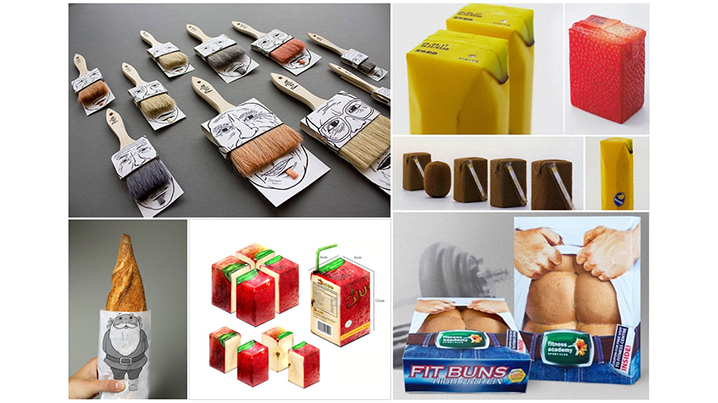The B2C environment is crowded, and companies today must constantly strive to stand out and attract consumers. From product design to marketing strategies, businesses invest significant resources in creating a strong brand image. However, one crucial aspect often overlooked is product packaging and its impact on user experiences. Neuromarketing, a field that combines neuroscience and marketing, provides valuable insights into how consumers respond to different packaging designs. By understanding the cognitive and emotional processes behind consumer decision-making, companies can optimise their product packaging to create a more engaging and memorable user experience.
In this article, I’ll explore the ways neuromarketing can be used to enhance product packaging and ultimately drive consumer behaviour. From analysing the role of colour and shape to understanding the importance of sensory cues, let’s look at some strategies that can be implemented to create a strong connection between consumers and products. By incorporating neuromarketing principles, companies can not only improve their packaging but also create a more compelling brand identity and ultimately increase sales.
Understanding the Power of Neuromarketing
In today’s highly competitive market, it’s crucial for businesses to understand the power of neuromarketing. This innovative approach to marketing uses insights from neuroscience to understand consumer behaviour and decision-making processes better. By tapping into the subconscious mind, neuromarketing can reveal valuable insights about consumer preferences and motivations, allowing businesses to better resonate with their target audience. With the rise of e-commerce and the increasing importance of visual appeal in attracting consumers, neuromarketing has become an essential tool for businesses looking to be seen in the crowded marketplace.
Leveraging Packaging Design for Impact
Through the lens of neuromarketing, packaging design becomes a critical element in influencing consumer perceptions and behaviours. The colours, fonts, and images chosen for a product’s packaging can evoke specific emotions and associations, influencing purchasing decisions. By leveraging packaging design, businesses can create a deeper connection with their target audience and stand out. This approach goes beyond simply creating aesthetically pleasing packaging but rather strategically employing design to create a memorable user experience. With the help of neuromarketing, businesses can optimise their product packaging to create a lasting impression on consumers, ultimately leading to increased sales and brand loyalty.
Incorporating Visual Cues for Engagement
To further enhance the effectiveness of neuromarketing techniques in product packaging, incorporating visual cues can be powerful. Visual cues, such as shapes, symbols, and patterns, can be strategically placed to draw attention and create a sense of familiarity and connection with the consumer. Studies have shown that incorporating visual cues can increase consumer engagement and recall, which is especially useful in a busy marketplace, where a product needs to make a lasting impression on the consumer.
Creating Emotional Connections with Color
A powerful way to connect with consumers is through the use of colour. Colour is a key component of visual marketing and has the ability to evoke strong emotions and associations in individuals. By understanding the psychology behind different colours and their effects on the brain, businesses can strategically use colour to create a desired response in their target audience. Whether it’s using warm, inviting colours for a sense of comfort and trust or bold, vibrant colours for a sense of excitement and energy, colour can play a crucial role in optimising product packaging.
Enhancing User Experiences through Texture
In addition to colour, texture is another element that can greatly impact user experiences and purchasing decisions. Texture can evoke certain emotions and associations in consumers, but it can also add a tactile element to product packaging. Studies have shown that incorporating textures such as soft, smooth, or rough can enhance the overall appeal of a product and create a more memorable experience for the user.
Utilising Shape and Form for Brand Recognition
Shape and form are other design elements that can greatly impact brand recognition and consumer behaviour. Research has shown the human brain responds to shapes and forms in a unique and impactful way, with certain shapes and forms evoking specific emotions and associations. By strategically using these elements in product packaging and branding, companies can create a strong visual identity that sets them apart from their competitors and resonates with their target audience.
Maximising Attention with Typography
Typography refers to the style and arrangement of text, and it can play a crucial role in capturing and maintaining a consumer’s attention. The right font, size, and placement can make a product stand out on a shelf or a website, drawing the eye and conveying a message to the consumer. With the help of neuromarketing research, companies can gain insights into which typography styles are most effective in capturing attention and engaging consumers. By carefully selecting and using typography in their packaging and branding, companies can maximise their chances of creating a memorable and impactful product experience.
The Role of Neuromarketing in Product Unboxing
In the case of product unboxing, neuromarketing can be used to create a sense of anticipation and excitement. By leveraging these emotions, companies can enhance the unboxing experience and create a strong connection with their products, sometimes leading to fanatic brand loyalty.
Conclusion
Without a doubt, neuromarketing offers a valuable approach to optimising product packaging and user experiences. By tapping into the subconscious desires and emotions of consumers, companies can create packaging and user experiences that truly resonate with their target audience. Incorporating neuromarketing techniques into product development can lead to increased sales, customer satisfaction, and brand loyalty. As technology and research in this field continue to advance, it will be interesting to see how companies use these strategies to stand out in a competitive market.



